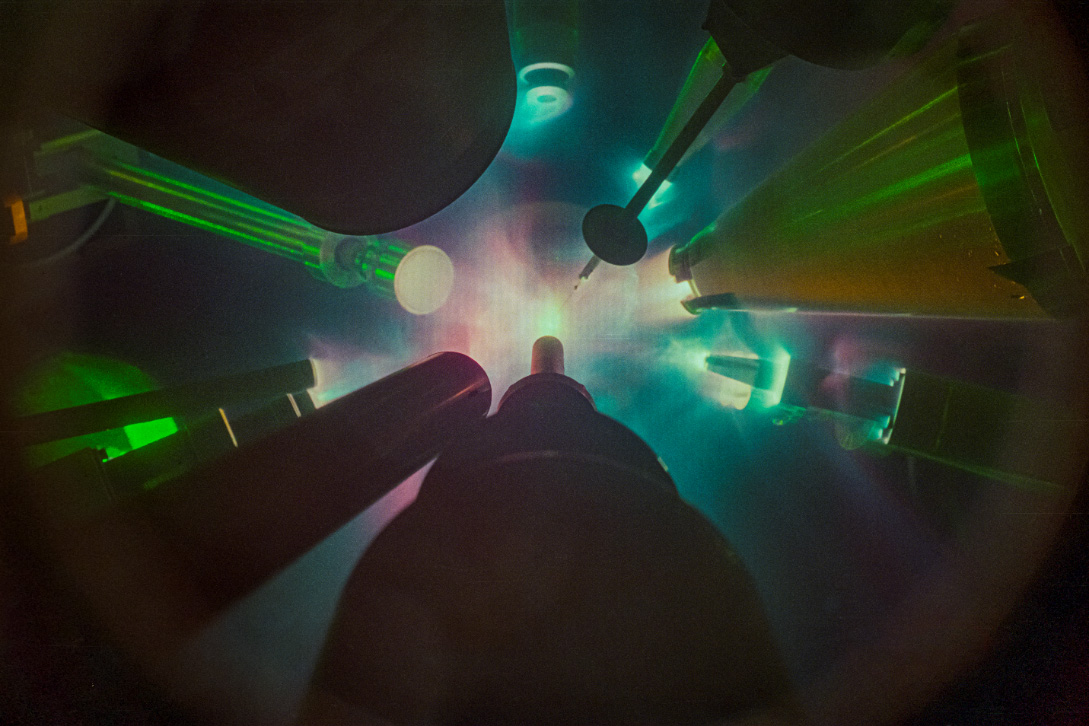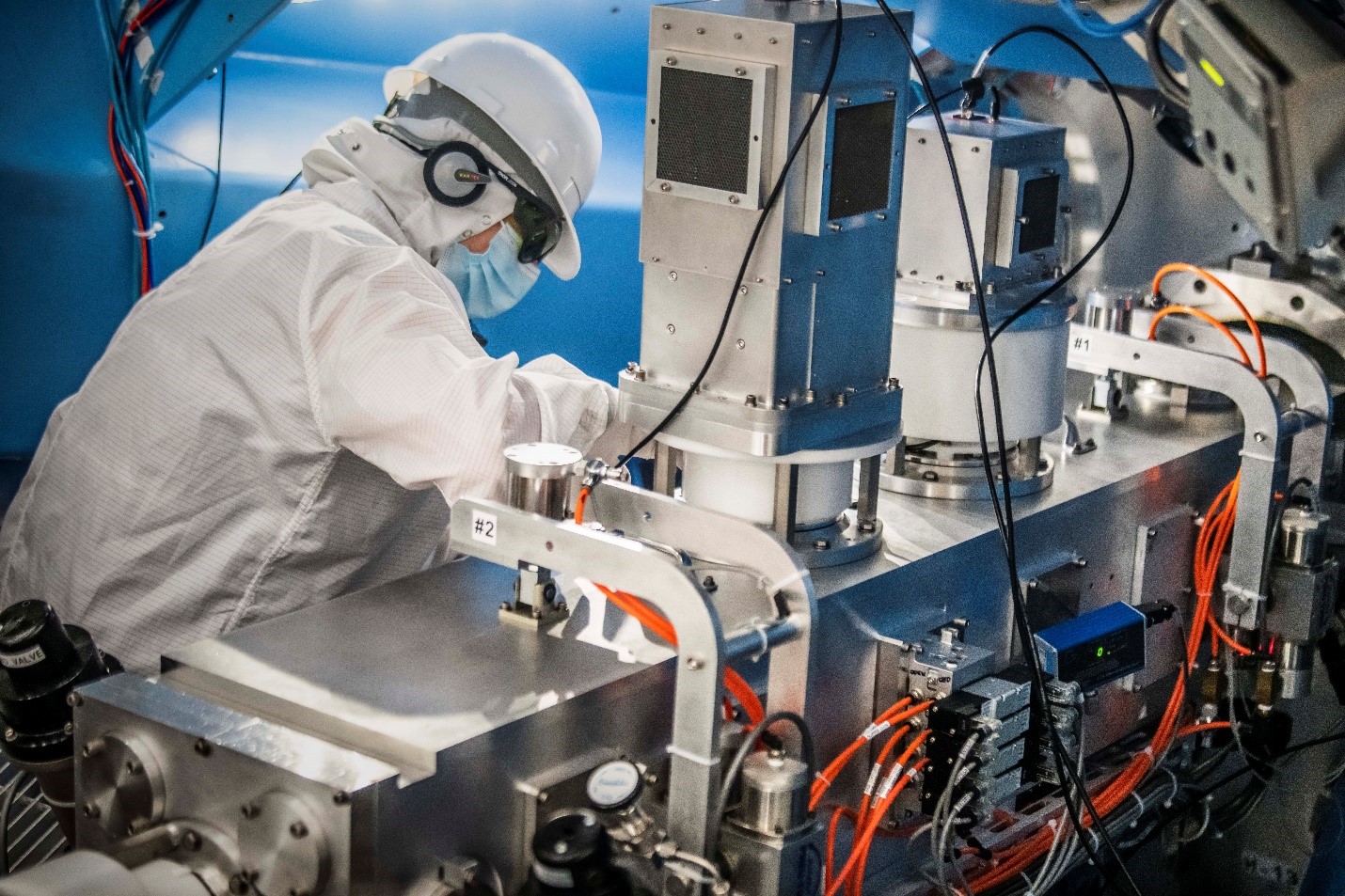Press Release
Johns Hopkins APL Partners With University of Rochester’s Laser Lab to Collect Critical Radiation Effects Data
Earth is protected from the full impact of solar and cosmic radiation by its atmosphere, the magnetic fields that surround it and the radiation belts caused by that field. However, anything caught outside of this protective cover is exposed to the full radiation spectrum and its damaging effects, which challenge designs for aerospace and defense systems by potentially affecting electronics and changing the properties of other materials.
Additionally, for some defense applications, the behavior of systems in human-generated radiation environments must also be well understood to prepare for potential future operating conditions.
The Johns Hopkins Applied Physics Laboratory (APL), in Laurel, Maryland, is leading a test campaign to collect critical radiation effects data for a wide range of materials to support future programs in the Department of Defense. “The new measurements will provide critical validation data for modeling codes in extended physics regimes,” explained Amanda Davis, APL’s project manager for the Omega Experiments. “Validated and verified modeling tools will allow us to recommend improvements to critical mission systems addressing a wide range of scenarios.”
In sponsor engagements, Davis and her team — which includes staff members from APL’s Air and Missile Defense Sector (AMDS), Space Exploration Sector (SES), and Research and Exploratory Development Department (REDD) — identified a need to understand the behavior of complex materials in challenging radiation environments. “While computational codes exist to address different aspects of the material responses,” she explained, “real-world experimental data was needed to better understand their performance.”
To conduct the experiments, the team turned to the largest university-based laser facility in the world: the Omega Laser Facility, part of the University of Rochester’s Laboratory for Laser Energetics (LLE) in New York. The facility is home to the OMEGA EP Laser and the OMEGA Laser. The team is using the OMEGA Laser — approximately the size of a football field, with a 3-meter-diameter target chamber — which delivers pulses of laser energy to targets to measure the resulting nuclear and fluid-dynamic events. Its primary mission is to support the Department of Energy National Nuclear Security Administration (DOE/NNSA) Stockpile Stewardship Program through fusion and high-energy-density science research. According to the facility’s website, “its 60 laser beams focus up to 30,000 joules of energy onto a millimeter-scale target in approximately one billionth of a second.”
“This facility provides experimental access to radiation regimes of interest in a highly repeatable, controlled laboratory environment, providing a great opportunity to collect the data we need,” said Joshua Fullerton, a former Omega Experiment project manager and an assistant program area manager for Strategic Missile Defense in AMDS.
The APL-led Omega Experiments began in 2020. APL researchers first developed two new instrument systems to run on each experiment. They designed special holders for their samples and worked with LLE to verify that the samples would be safe to use with the facility’s precision high-energy laser system. They also conducted “fit and function” testing and then successfully carried out three days of experiments on the OMEGA Laser in 2021.
These experiments involved generating extreme radiation environments that last billionths of a second. “When observing the responses of macroscopic material samples, many complicated, interacting processes — such as material vaporization, melt, chemical decomposition and shock responses — can occur on a variety of different time- and spatial scales,” explained Davis. “Without high-quality data, it’s difficult to understand how well the interplay of these processes is being modeled in a particular regime.”

